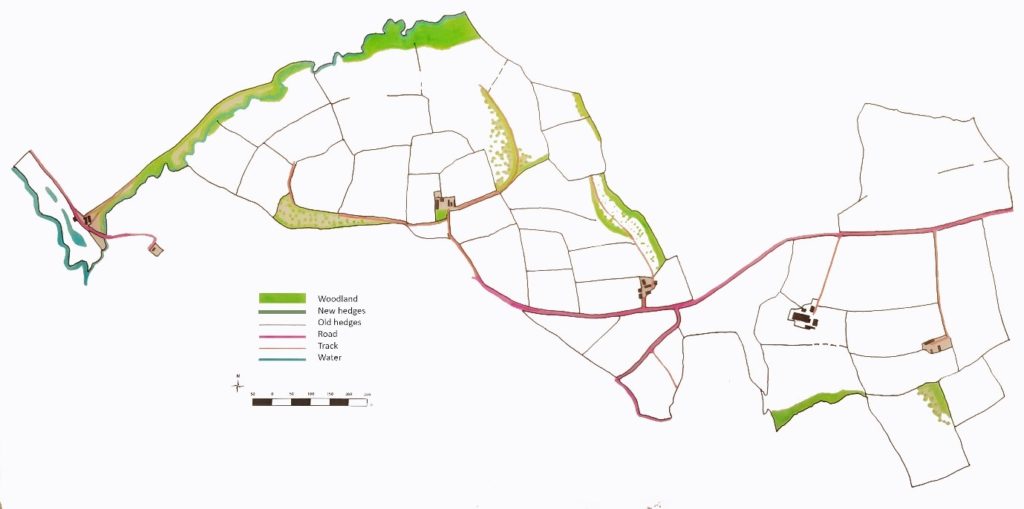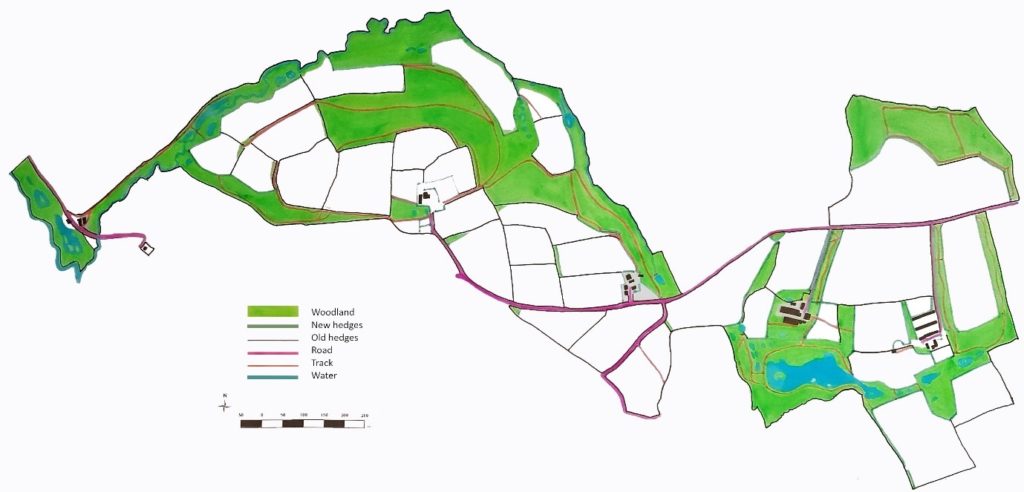Climate change on the farm
The recent protests and awareness of climate change are what the Bevis Trust is all about. How can we somehow reconcile the needs of producing food for an ever-expanding human population while at the same time reducing carbon emissions and improving biodiversity? It’s all very well talking about it. How to actually do it?
Here on the farm we have of course insulated and double glazed everything and nine of the houses are now heated by ground-source heat pumps. This has been a somewhat mixed blessing because you still need electricity to pump the water around. We have a total of 57Kw of solar panels on three of the buildings. This could have been more but the tariffs have been tricky and have now stopped. As batteries improve I hope that not before too long we will be able to do more solar power and run the vehicles from it. It would not be difficult for architects to design roofs and walls to face the sun and collect energy.
But probably our biggest contribution has been to take about 30% of the farm out of agriculture into trees. We have targeted the steep slopes and boggy corners, digging ponds and planted indigenous trees. Our early efforts with larch and ash have hit the buffers with ash dieback disease, but we have learned our lesson. We did sacrifice some better land to plant four north-south orientated shelter strips, but these are paying off now by improved microclimates in their wind-shadows. With the trees now around 10 metres high, the wind speed is halved 50 metres out into the field, which improves grass growth and provides shelter for livestock, reducing their feed requirements for maintenance metabolism. Although we lose 20 metres or so for the shelterbelts, the improved performance of the field probably balances out the loss of area.
We bought the farm in stages since 1982 and it is interesting to show a map of it at the time we bought each part compared to how it is now. As well as the new woods, we have about 30 new ponds, 14.4 km of old hedgerows, 6.4 km of new hedgerows and 8.4 km of new tracks.

The farm as we have bought it in parcels since 1982.

The farm in 2019.
Farming makes no sense at all at the moment with return on investment on land running at about 1.25% and average farm income on our type of farm at £17,000 per year. Currently 86% of farms in Wales would have negative incomes were it not for the subsidy payments.